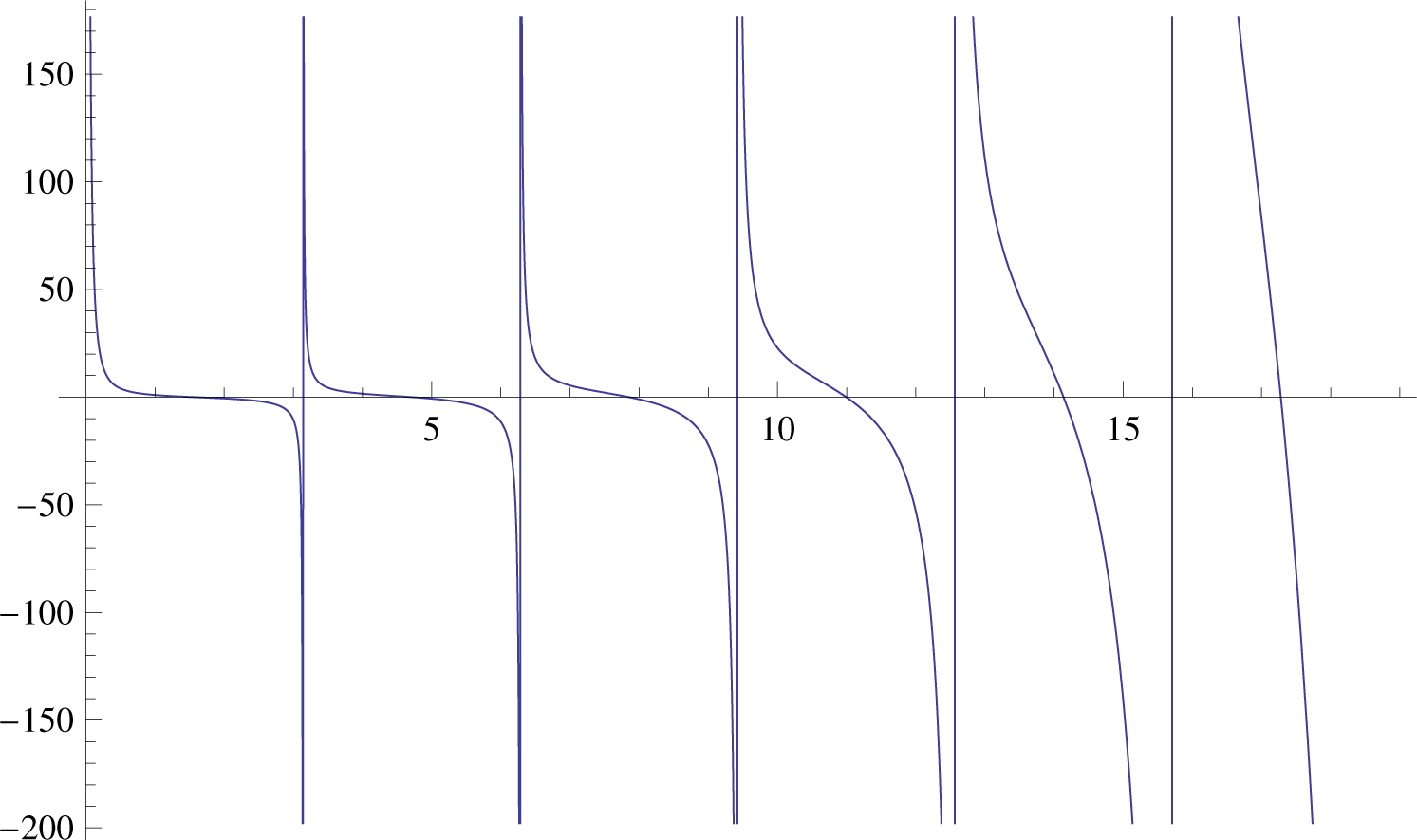An Optimal Eighth-Order Derivative-Free Family of Potra-Pták’s Method
Abstract
:1. Introduction
2. Development of Derivative-Free Methods and Convergence Analysis
3. Convergence Analysis
4. Special Cases
5. Numerical Experiments
6. Conclusions
Acknowledgments
Author Contributions
Conflicts of Interest
References
- Petković, M.S.; Neta, B.; Petković, L.D.; Džunić, J. Multipoint Methods for Solving Nonlinear Equations; Academic Press: Orlando, FL, USA, 2012. [Google Scholar]
- Kung, H.T.; Traub, J.F. Optimal order of one-point and multi-point iteration. J. Assoc. Comput. Math. 1974, 21, 643–651. [Google Scholar]
- Ostrowski, A.M. Solutions of Equations and System of Equations; Academic Press: New York, NY, USA, 1960. [Google Scholar]
- Potra, F.A.; Pták, V. Nondiscrete introduction and iterative processes. In Research Notes in Mathematics; Pitman: Boston, MA, USA, 1984; Volume 103. [Google Scholar]
- Traub, J.F. Iterative Methods for the Solution of Equations; Prentice-Hall: Upper Saddle River, NJ, USA, 1964. [Google Scholar]
- Steffensen, J.F. Remarks on iteration. Skand Aktuar Tidsr 1933, 16, 64–72. [Google Scholar]
- Petković, M.S.; Ilić, S.; Džunić, J. Derivative free two-point methods with and without memory for solving nonlinear equations. Appl. Math. Comput. 2010, 217, 1887–1895. [Google Scholar]
- Andreu, C.; Cambil, N.; Cordero, A.; Torregrosa, J.R. A class of optimal eighth-order derivative-free methods for solving the Danchick-Guass problem. Appl. Math. Comput. 2014, 232, 237–246. [Google Scholar]
- Soleymani, F.; Sharma, R.; Li, X.; Tohidi, E. An optimized derivative-free form of the Potra-Pták method. Math. Comput. Model. 2012, 56, 97–104. [Google Scholar]
- Soleymani, F. Optimal Steffensen-type methods with eighth-order of convergence. Comput. Math. Appl. 2011, 62, 4619–4626. [Google Scholar]
- Zheng, Q.; Li, J.; Huang, F. An optimal Steffensen-type family for solving nonlinear equations. Appl. Math. Comput. 2011, 217, 9592–9597. [Google Scholar]
- Soleymani, F. On a bi-parametric class of optimal eight-order derivative-free methods. Int. J. Pure Appl. Math. 2011, 72, 27–37. [Google Scholar]

| Test functions | Roots | Initial guess |
|---|---|---|
| f1(x) = (sin x)2 + x | α = 0 | x0 = 0.5 |
| f2(x) = x2 − (1 − x)25 | α. ≈ 0.14373925929975369826697493201066691… | x0 = 0.4 |
| α. ≈ 0.59481096839836917752265623515213618… | x0 = 0.3 | |
| α. ≈ 0.44326078355676706795301995624689113… | x0 = 0.41 | |
| f5(x) = 10xe−x2 − 1 | α. ≈ 1.6796306104284499406749203388379704… | x0 = 1.5 |
| f | KTM8 | ZM8 | ||||||
|---|---|---|---|---|---|---|---|---|
| f1 | |f(x1)| | 1.21e−3 | 1.22e−3 | 4.33e−3 | 1.67e−3 | 0.9e−3 | 5.86e−4 | 7.81e−4 |
| |f(x2)| | 5.84e−22 | 3.06e−22 | 1.00e−13 | 4.85e−21 | 7.46e−24 | 1.44e−24 | 6.59e−25 | |
| |f(x3)| | 7.16e−168 | 4.67e−171 | 1.63e−77 | 2.60e−161 | 1.31e−184 | 1.92e−189 | 3.35e−193 | |
| f2 | |f(x1)| | 4.37e−3 | 4.08e−3 | 1.18e−2 | 3.02e−3 | 2.08e−3 | 3.49e−5 | 3.49e−3 |
| |f(x2)| | 3.21e−12 | 1.06e−11 | 1.16e−6 | 1.18e−12 | 2.69e−16 | 8.72e−20 | 8.09e−15 | |
| |f(x3)| | 1.01e−85 | 1.81e−80 | 5.09e−31 | 4.59e−88 | 1.06e−118 | 1.32e−144 | 1.26e−107 | |
| f3 | |f(x1)| | 1.06e−7 | 6.23e−8 | 6.50e−6 | 3.92e−7 | 1.94e−8 | 4.81e−8 | 1.55e−8 |
| |f(x2)| | 9.23e−59 | 1.07e−60 | 3.25e−33 | 2.65e−54 | 4.55e−66 | 1.73e−62 | 2.44e−66 | |
| |f(x3)| | 3.15e−467 | 8.39e−483 | 5.05e−197 | 1.15e−431 | 0.1e−490 | 4.93e−498 | 0.1e−492 | |
| f4 | |f(x1)| | 9.31e−5 | 1.25e−4 | 1.46e−5 | 1.83e−5 | 1.00e−8 | 4.94e−7 | 1.21e−6 |
| |f(x2)| | 8.46e−30 | 2.55e−29 | 5.66e−29 | 5.52e−36 | 1.08e−65 | 8.35e−49 | 9.70e−470 | |
| |f(x3)| | 3.95e−230 | 7.45e−227 | 1.92e−169 | 3.76e−280 | 0.1e−492 | 5.53e−383 | 1.68e−367 | |
| f5 | |f(x1)| | 1.00e−3 | 3.79e−4 | 2.80e−3 | 1.78e−4 | 2.61e−5 | 1.79e−6 | 1.84e−6 |
| |f(x2)| | 4.54e−26 | 9.35e−85 | 4.27e−49 | 7.58e−87 | 1.42e−39 | 1.06e−47 | 4.60e−48 | |
| |f(x3)| | 7.83e−205 | 4.28e−234 | 1.00e−101 | 5.17e−257 | 1.09e−313 | 1.58e−377 | 7.04e−381 |
| Methods | |g1(x1)| | |g1(x2)| | |g1(x3)| |
|---|---|---|---|
| Method KTM8 Equation (26) | 9.81e−3 | 4.14e−6 | 8.18e−13 |
| Method Equation (27) | 1.03e−2 | 3.21e−6 | 3.21e−13 |
| Method ZM8 Equation (28) | 3.28e−3 | 6.23e−11 | 8.36e−42 |
| Method Equation (29) | 2.89e−2 | 6.28e−5 | 3.66e−10 |
| Our Method Equation (23) | 2.97e−3 | 2.43e−22 | 4.69e−175 |
| Our Method Equation (24) | 5.98e−4 | 3.56e−24 | 1.31e−188 |
| Our Method Equation (25) | 1.33e−4 | 5.87e−33 | 6.67e−258 |
| Methods | |g2(x1)| | |g2(x2)| | |g2(x3)| |
|---|---|---|---|
| Method KTM8 Equation (26) | D | D | D |
| Method Equation (27) | D | D | D |
| Method ZM8 Equation (28) | 2.63e−1 | 6.16e−7 | 1.87e−40 |
| Method Equation (29) | 0.786e+3 | 0.12e+1 | 1.03e−4 |
| Our Method Equation (23) | 1.09e−1 | 7.44e−7 | 5.53e−13 |
| Our Method Equation (24) | 2.61e−3 | 4.05e−25 | 1.40e−199 |
| Our Method Equation (25) | 2.52e−3 | 3.94e−25 | 1.43e−199 |
© 2015 by the authors; licensee MDPI, Basel, Switzerland This article is an open access article distributed under the terms and conditions of the Creative Commons Attribution license (http://creativecommons.org/licenses/by/4.0/).
Share and Cite
Kansal, M.; Kanwar, V.; Bhatia, S. An Optimal Eighth-Order Derivative-Free Family of Potra-Pták’s Method. Algorithms 2015, 8, 309-320. https://doi.org/10.3390/a8020309
Kansal M, Kanwar V, Bhatia S. An Optimal Eighth-Order Derivative-Free Family of Potra-Pták’s Method. Algorithms. 2015; 8(2):309-320. https://doi.org/10.3390/a8020309
Chicago/Turabian StyleKansal, Munish, Vinay Kanwar, and Saurabh Bhatia. 2015. "An Optimal Eighth-Order Derivative-Free Family of Potra-Pták’s Method" Algorithms 8, no. 2: 309-320. https://doi.org/10.3390/a8020309
APA StyleKansal, M., Kanwar, V., & Bhatia, S. (2015). An Optimal Eighth-Order Derivative-Free Family of Potra-Pták’s Method. Algorithms, 8(2), 309-320. https://doi.org/10.3390/a8020309





